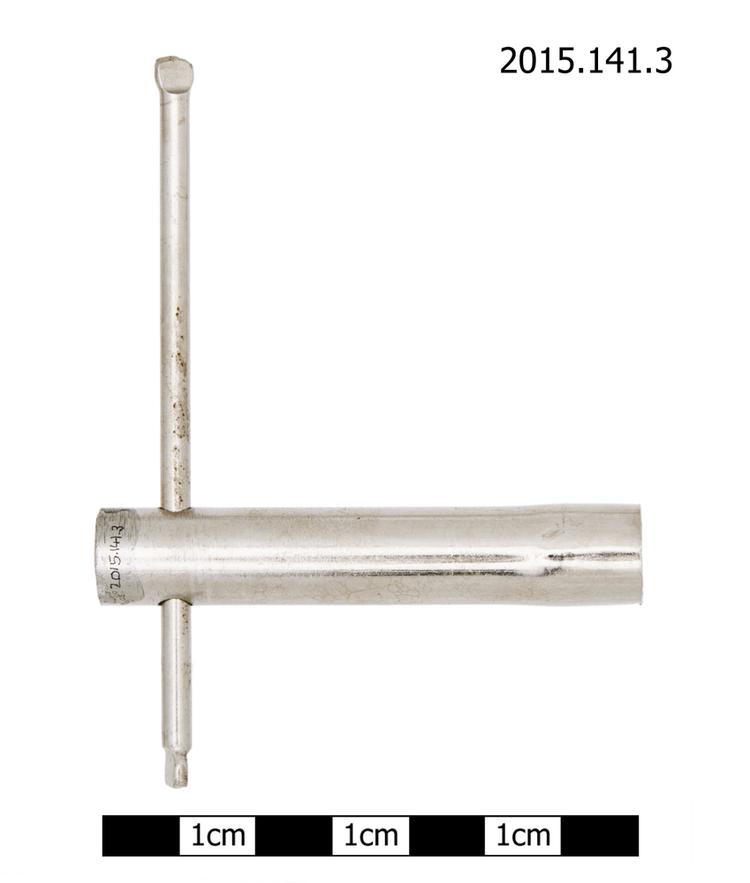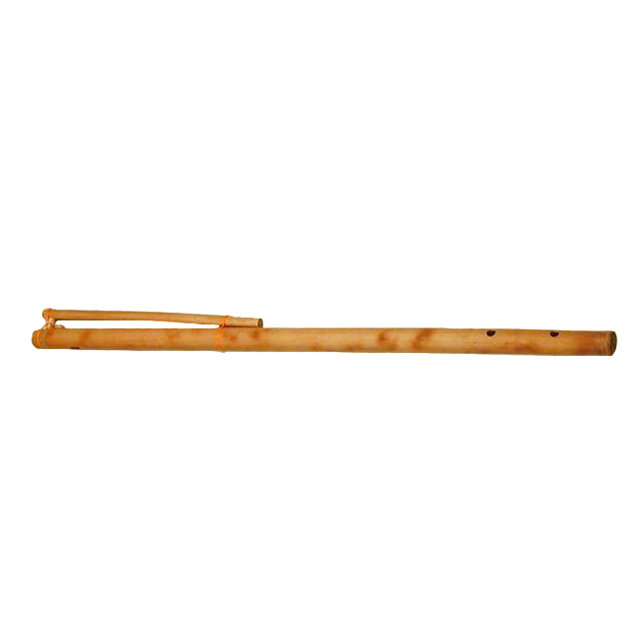
Irish frame drum and beater.
{PLACE: Conamara, Ireland}
This drum is played seated with the drum held vertically, resting on the thigh. It can be played either by striking skin with the hand or with a wooden beater, called a tipper.
The drum is held vertically in the hand, either by the wooden crossbar or with the flat palm pressed against the inside of the drum skin. It is best to sit and rest the bottom of the frame on your thigh.
The bodhràn is played with a double-headed lathe turned beater called a tipper, or a cipin, or a bone. It is thought to have originated from double headed knuckle bone. There are various playing styles named after regions in Ireland. The most common playing style is the ‘Kerry’ style which uses both ends of the tipper. Hold the tipper in the middle, like a pencil and tilt your hand back and forth so that alternate ends of the tipper strike the skin. The ‘West Limerick’ style uses only one end of the tipper.
With the hand pressed against the inside of the drum skin you can vary the tension and therefore the pitch of the skin. The two main rhythms are the 4/4 reels and the 6/8 jigs.
It is a traditional Irish drum said by some to have originated as a tray for carrying peat. It was used by the Irish forces as a war drum in the Irish Rebellion of 1603 to beat time for the pipers and marching soldiers. Its origin may therefore be as a war drum. It was also used in festival processions particularly the festival of St. Stephen (December 26th?). It began to be used in dance music in the 1950s. It can be used in an Irish (and sometimes Scottish) band to emphasize the rhythm of the jigs and reels. Similar frame drums are in wide spread use, particularly in North Africa.






